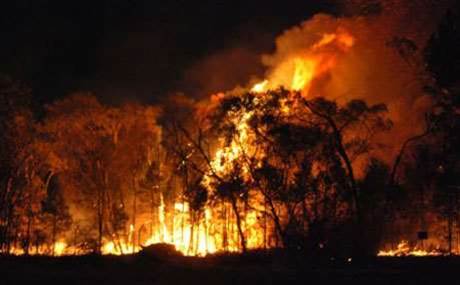Australia’s national facial biometrics matching database was put to the test during the catastrophic Black Summer bushfires to verify the identities of people who had their documents destroyed.

The commission into national natural disaster arrangements on Thursday heard biometrics was trialled last summer as a means to help deliver disaster relief payments to displaced individuals.
Services Australia deputy chief Michelle Lees, who is responsible for customer service delivery, said “a face verification service and biometric alignment around proof of identity” was used.
The Department of Home Affairs first revealed the use of the face verification service (FVS) for bushfire relief payments at senate estimates in March.
But it offered little detail on how the service - which first launched during 2016 and now forms a component of the national driver licence facial recognition solution (NDLFRS) - was used.
Lees on Thursday said a simple webcam setup was used to capture the facial images of people who had their documents destroyed, as well as those “who were displaced from their homes”.
“It wasn’t just the loss of documents," she said
“People had to leave their homes very quickly or they might have been in another location as the event came through, so they didn’t necessarily have those types of documents with them.”
She said the photos were then matched against photos from passports, visas and driver’s licenses contained in the cross-border database, granted citizens provided consent to do so.
“[The matching process] involved, firstly, explaining to the person that was making the claim what the face verification service meant,” she said.
“That meant matching a photograph of their face with the other identification documents.
“There was a webcam where it actually took the image and through a portal matching it up the other existing photographic ID, whether it be passport, visa or driver’s licenses.
“There were a small number of instances where the individuals did not give consent, and so we went through the usual proof of identity mechanism for those individuals.”
Contrary to Home Affairs, Lees also said the service was used outside of Victoria and South Australia - the first two states to upload their driver’s licence photographs to the NDLFRS.
“We attempted to use this service in all of the impacted locations, particularly in early 2020,” she said.
“Whilst we had arrangements in place, specifically ... agreement to use driver’s licences in SA and Victoria, we also could match passports and any visas that might have a photograph in other jurisdictions.
“So we did trial the utilisation in a range of states.”
A Services Australia submission to the commission indicates hundred of Australians used the service to confirm their identity.
The agency is now looking at how the technology might be applied in the future, taking into consideration a range of learnings from the trial.
“We continue to look at how we might build out the FVS and biometric identity utilisation more broadly,” Lees said.
“There is work elsewhere within the Commonwealth looking at digital identity, and we will continue to look at how we might best leverage those technologies as they improve.
“There were some learnings about how we could best use the existing FVS through this approach, and we’re implementing changes accordingly.”


























